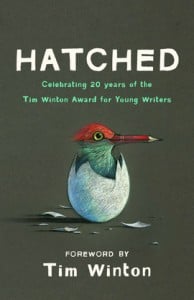 At over 480 pages, Rich and Rare, may at first seem like a challenge – but as a collection of Australian short stories, poetry and artwork, it is probably one of the most accessible books published in Australian YA fiction recently.
At over 480 pages, Rich and Rare, may at first seem like a challenge – but as a collection of Australian short stories, poetry and artwork, it is probably one of the most accessible books published in Australian YA fiction recently.
Editor, Paul Collins, has described it as as ‘a sumptuous literary feast’ in which ‘no one will go away hungry, as the collection is a literary banquet with something for everyone.’ And like a feast or banquet, it is a book which you can dip in and out of wherever you want, and, as much as you want or need.
With the contents divided into 13 different genre groupings, there will be parts that appeal to many different readers, at different times in their reading journey. With an amazing collection of contemporary Australian authors, it also provides a tasting of writing by our very best, well recognised Australian authors, poets and illustrators – which is truly inspirational.
As a collection of short stories, the anthology provides many great examples of how to tell tale succinctly; which will appeal to a generation which wants things ‘fast and furious’ and who read with ‘a need for speed’.
As a collection of short stories, set in Australian condoitions, it provides many ‘aha’ moments which readers will recognise – for example:
- the perfect weather which ends school holidays (A Tidy Town)
- the sadness of losing a sibling (My Brother’s Keeper)
- the tussles of brotherhood (the Knitting Needle Ninja)
- when talent and perserverance triumph (Bringing Luisa to Life)
It also provides some interesting tales, which challenge:
- the rights of privilege and inheritance (the Two-faced Boy)
- the spirit of adventure (Search)
- what you should/could do to support your family in times of crisis (I Can’t Sleep)
While Brodie writes diary entries to frogs (the Frog Diaries), a precious pet is lost in Carpet Capers, and a vindictive teacher makes life uncomfortable for his young students (Dr Lovechild Regrets) – but will he reap what he sows? In the mix, with many many more tales, there is a great assortment to both please and intrigue readers – indeed, too many to write about individually.
In the busyness of daily life, this anthology could be a welcome collection. With reknowned authors, interesting genres/themes and inspirational tales to share, it provides strong but concise stories without huge time demands on readers. Perhaps ones that will inspire discovery of lengthier stories written by many of these talented creators? Indeed, there are many more stories to discover within and beyond this amazing collection.
Which is your favourite:
- tale with the book?
- author within the book?


